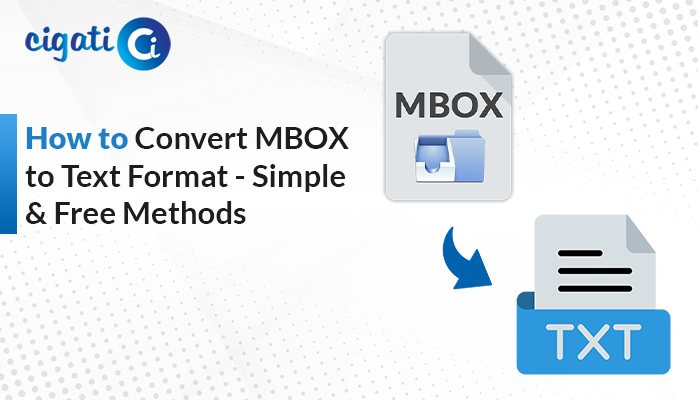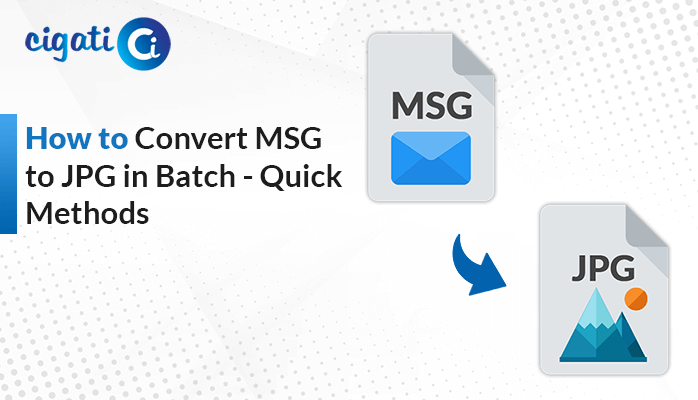-
Written By Rohit Singh
-
Updated on July 5th, 2024
How to Open MBOX File in Outlook 2019 (and Other Versions)
“John is a freelance writer who gets emails from clients in a format called MBOX. He uses Outlook for his emails but finds it hard to manage MBOX files separately. So, he tries to change MBOX files into a PST that Outlook can understand. But when he does this, he notices that about half of his emails are missing! Now, he needs a good solution to ensure all his emails show up correctly when he will open MBOX file in Outlook.”
Here, you’ve seen that it is not one issue that comes arises. Performing conversions manually can be a tedious and time-consuming task. It often involves multiple steps and can be prone to errors. So, we have an efficient solution, Cigati MBOX Converter, to view your MBOX files in Outlook without data loss. Just read and understand each concept. As a result, it will clear all your doubts.
Reasons for Opening MBOX Files in Outlook:
Importing MBOX files into Microsoft Outlook can be helpful for many reasons. Imagine you have emails from different places and want to manage them all in one spot. That’s where Outlook comes in handy! Here’s why people often import MBOX files into Outlook:
- Keeping Everything Together: When you import MBOX files into Outlook, all your emails from different places end up in one place.
- Access Anywhere: Sometimes, MBOX files can’t open on all devices or email programs. But Outlook works almost everywhere, so importing your MBOX files ensures you can check your emails no matter where you are.
- Better Features: Outlook has various cool things you can do with your emails, like sorting them, setting reminders, and connecting with other Microsoft apps. Importing MBOX files lets you use all these features.
- Backup Plan: MBOX files can sometimes get lost or damaged. By importing them into Outlook, you create a backup in a safe format, so you don’t lose any important emails.
Importing MBOX files into Outlook is the best way to keep your emails organized, accessible, and safe.
Also Read: Convert MBOX File to PST
How to View MBOX Files in Outlook: Top 2 Solutions
To open MBOX file in Outlook, we’ve provided you several solutions. Follow the below section.
#1. Utilizing the Drag and Drop Method
- First, make sure Outlook is installed on your computer.
- After that, open Thunderbird and install the ImportExportTools NG Add-on from the Menu.
- Then, create a new folder in the mail section of Thunderbird.
- Further, drag and drop the MBOX file onto the newly created folder in Thunderbird.
- This action converts the MBOX file into EML files, which Outlook can understand.
- In Outlook, create a new folder where you want to keep these emails.
- At last, drag the EML files saved earlier from Thunderbird and drop them into the new folder you created in Outlook.
#2. Manually Opening MBOX Files in Outlook
The following section is distributed in three steps. Read the steps very carefully to accomplish the procedure.
Step 1: Set Up Gmail in Thunderbird
- First, create a Gmail account if you don’t have one already.
- After that, open Thunderbird and go to Mail > Preferences.
- In Accounts, add your Gmail account and follow the setup process by providing your credentials.
Step 2: Import MBOX Files to Thunderbird
- In Thunderbird, right-click Local Folders and choose Settings.
- Then, copy the “Local Directory” path shown.
- Next, locate your MBOX files and paste them into this location.
- Further, restart Thunderbird, and you’ll see your MBOX folder under Local Folders.
- Now, select the emails you want to export to Outlook, right-click, and choose Export.
- Choose to move or copy the emails to Gmail, depending on your preference.
Step 3: Configure and Move to Outlook
- Open Microsoft Outlook and go to Outlook > Preferences.
- Select Accounts and click the “+” icon, then choose Mail.
- Subsequently, use the same Gmail login credentials you used in Thunderbird.
- At last, add the account, and your MBOX emails will now show up in Outlook.
Here, we accomplished all the manual ways to open MBOX file in Outlook. However, the above techniques don’t allow users to convert in bulk. Moreover, they consume enough time to complete the procedure. If you want to implement the solution with ease, follow the subsequent approach.
#3. Verified Method to Read MBOX Files in Outlook
Opening MBOX files in Outlook becomes easy with the help of the Cigati MBOX Converter. This tool simplifies viewing MBOX files to MS Outlook effortlessly. It’s great for converting one file or many at once, and it’s built to be easy to use. Moreover, this wizard allows users to maintain the hierarchy folder and view targeted files in a preview panel. You can even try it out for free with a trial version, and if you ever need assistance, there’s 24/7 tech support available. Follow the below steps to know the working.
Steps to Open an MBOX File in Outlook
- First, download and install the MBOX Converter Tool on your computer.
- Afterwards, choose whether to convert a single file or multiple files/folders containing MBOX files.
- Then, select the specific folders you want to convert and preview the emails and attachments.
- Next, choose the PST format from the available options.
- Further, specify a destination folder where the converted PST files will be saved.
- Now, click on the Convert button to convert the MBOX files to Outlook PST format.
Further, you need to import the resultant PST file to Outlook. Follow the below steps.
- Open Microsoft Outlook and go to the File menu.
- Click on Open & Import and choose Import/Export.
- Moving ahead, select Import from another program or file and then choose Outlook data file (.pst).
- Then, browse and locate the PST file you want to import into Outlook.
- Finally, click Finish to complete the import process.
Conclusion
By following these steps, you can quickly open MBOX file in Outlook and view your email data in Microsoft’s familiar email client interface. This method makes it easy to merge your MBOX data into Outlook. As a result, it lets you manage all your email accounts in one convenient location.
You May Also Read: Open MBOX File on Mac
About The Author:
Rohit Singh is an Email Backup, Recovery & Migration Consultant and is associated with Software Company from the last 3 years. He writes technical updates and their features related to MS Outlook, Exchange Server, Office 365, and many other Email Clients & Servers.
Related Post




